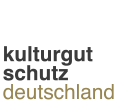European law
The European Union (EU) is a group of European countries (numbering 27 since Brexit) that have come together to build a community based on law, economics and shared values. The EU’s remit covers the adoption of regulations on the import, export and return of cultural goods. Even though the United Kingdom has left the European Union, these rules will continue to apply to and within the United Kingdom at least until 31 December 2020.
One of the main goals pursued by the EU is the establishment of a European internal market within which the free movement of goods (which, as a basic principle, also applies to cultural goods) is guaranteed. The Member States may, however, incorporate export and import restrictions into their domestic legislation with a view to protecting national cultural property. Article 36 sentence 1 of the Treaty on the Functioning of the European Union reads as follows:
“The provisions of Articles 34 and 35 [prohibitions on import and export restrictions] shall not preclude prohibitions or restrictions on imports, exports or goods in transit justified on grounds of […] the protection of national treasures possessing artistic, historic or archaeological value […].”
The EU itself has also adopted regulations on the protection of cultural property, including both directives and regulations. EU directives need to be transposed into national law by the country in question. This is not the case for regulations, which directly impose rights and obligations on citizens.
Regulations on the import and export of cultural goods
A number of different EU regulations govern the import and export of cultural goods into and out of the EU as an economic area:
Regulation (EC) No 116/2009 of the Council of 18 December 2008 on the export of cultural goods is aimed at preventing the unlawful removal of cultural goods out of the EU’s economic area to third countries (i.e. countries that are not EU Member States).
The provisions of this Regulation:
- outline its scope of application;
- define the term “cultural goods”;
- assign responsibilities and describe procedures.
Council Regulation (EC) No 1210/2003 of 7 July 2003 was adopted further to United National Security Council Resolution No 1483 (2003), and is aimed at preventing the import of certain Iraqi cultural objects into the EU’s economic area and the export of or dealing in these cultural objects.
The provisions of this Regulation:
- outline its scope of application; and
- demarcate the scope of protection.
Council Regulation (EU) No 1332/2013 of 13 December 2013 concerning restrictive measures in view of the situation in Syria prohibits the import, export or transfer of Syrian cultural property and other goods of archaeological, historical, cultural, rare scientific or religious importance where there are reasonable grounds to suspect that the goods have been removed from Syria in breach of Syrian law or international law. The Regulation is aimed, in particular, at protecting public collections held by Syrian museums, archives, libraries or religious institutions, since the ongoing civil war means that the risk of looting is particularly high.
Regulation (EU) 2019/880 of the European Parliament and of the Council of 17 April 2019 on the introduction and import of cultural goods ensures effective protection against the illicit introduction into the internal market and marketing of cultural goods from third countries, and applies solely to cultural goods originating from countries outside the EU. Cultural goods unlawfully exported from countries of origin outside the EU may not be introduced into the EU, although it continues to be possible for European cultural goods to be (re)imported.
Provisions on the protection of species may also be relevant in the context of importing and exporting cultural goods.
Directive on the return of cultural property within the EU
Directive 2014/60/EU of the European Parliament and of the Council of 15 May 2014 on the return of cultural objects unlawfully removed from the territory of a Member State regulates return proceedings initiated by one Member State in another Member State and the return procedure. When the customs borders between the Member States were abolished, it was necessary to introduce provisions of EU law to supplement the national export regulations aimed at preventing the expatriation of cultural objects.
This Directive was transposed into German law by means of the German Act on the Protection of Cultural Property (Kulturgutschutzgesetz, KGSG), which regulates firstly the return of cultural objects unlawfully exported from the sovereign territory of a Member State and introduced into Germany, and secondly the initiation of return proceedings against another Member State in connection with a particular cultural object belonging to Germany.
The provisions of the Act on the Protection of Cultural Property aimed at transposing the Directive on the return of cultural objects:
- define the term “cultural property”;
- assign responsibility for initiating return proceedings under public law against another Member State in connection with a cultural object;
- outline the criteria for the initiation of return proceedings by another Member State against the Federal Republic of Germany;
- assign responsibilities and describe the procedure for returning cultural objects.
Further information on the return of cultural property, including the regulations in respect of the signatory states to the 1970 UNESCO Convention on the Means of Prohibiting and Preventing the Illicit Import, Export and Transfer of Ownership of Cultural Property, can be found in the section on Return mechanisms.


